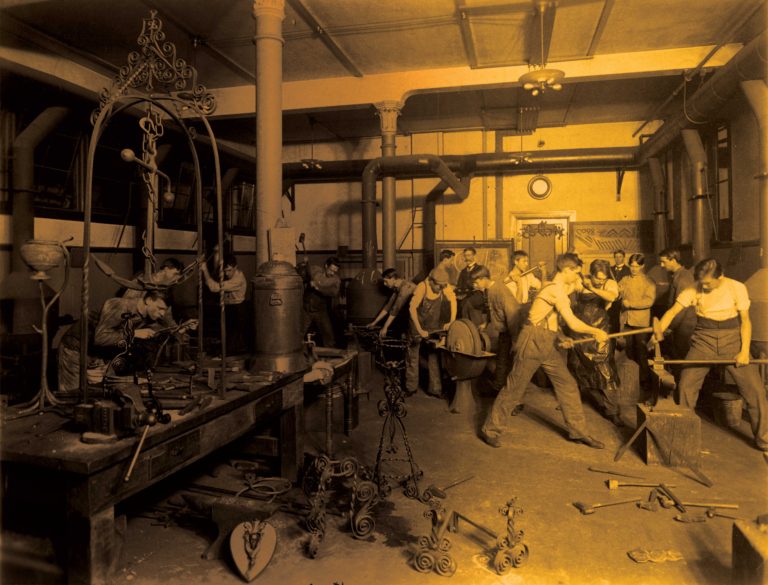As Drexel celebrates the centennial anniversary of its co-op program throughout the 2019/2020 academic year, we toast the employers who have made the program one of the nation’s largest, oldest and most successful of its kind. A century spent building partnerships with companies of all sizes, in all fields, across the United States and abroad has earned Drexel deep relationships with employers invested in cultivating graduates ready to make an impact from day one. Our network of employers has grown from a handful of local companies like DuPont and the Pennsylvania Railroad in the 1920s to more than 1,500 companies employing 5,300 students a year. They include Fortune 500 companies, enterprising startups, and respected arts and cultural nonprofits. Many organizations have been hiring Drexel co-op students for decades. Drexel Magazine asked them why they return year after year. Here’s what they say.
PECO, an Exelon Co.

PECO’s Director of Engineering Rich Cornforth says the utility hires Drexel co-op students because they bring new knowledge and perspective into the company.
Rich Cornforth has spent nearly 40 years working at PECO, adapting to changes in the utility industry along the way. But he says a fresh perspective from Drexel students can generate solutions that have eluded even him.
“Co-op students are just great resources,” says Cornforth, who is director of engineering at the Philadelphia-based natural gas and electric utility. “They bring skills that they’ve clearly picked up in their studies — data analytics and understanding the latest data tools.”
PECO has been hiring Drexel co-ops for four decades. This is because at PECO, co-op students get real work done, and they are as valued as employees are.
Cornforth has seen co-op students devise ways to automate rigorous tasks that have created lasting efficiencies by significantly reducing the time to complete them.
The students learn productivity hacks at Drexel that they bring with them to the job, which helps PECO’s bottom line. But for the nearly 150 co-op students who work at PECO each year, there’s always give and take.
PECO puts its co-op students through a rigorous onboarding and off-boarding process that includes five training sessions and optional career workshops with résumé reviews and mock interview scenarios. At the end of their co-op period, each student delivers a poster presentation on the project they completed. And these projects aren’t just theoretical — some have gone on to see implementation and millions of dollars of funding.
In fact, when Cornforth meets with company colleagues in other regions, he makes them jealous.
“As we compared staffing levels, the number of people and the amount of work that would get done, my peers were like, ‘Well, that’s not fair, you have extra people. You’re getting work done but I can’t hire more full-time staff,’” he reminisces. “I say, ‘Well, that’s your fault. Hire co-ops.’”
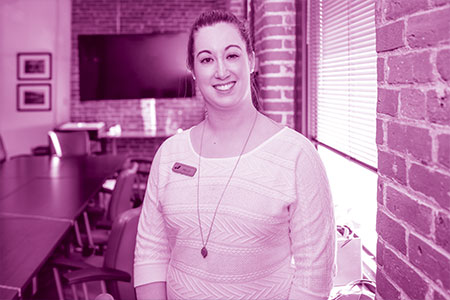
Kelly Rafferty, Philadelphia Eagles
Philadelphia Eagles
“There’s only so much you can learn in a classroom. We look for people who have gone out and joined clubs or actually done the work that they’re learning about in class. Drexel co-op students are taking things from their six months of class into the workforce and taking things from the workforce back into their classes, keeping the circle going. That’s appealing to us because we want people who can walk into the job and have experience under their belt, and knowledge of what it’s like to be in a professional environment, with all the teamwork and relationships that come with it.”
Kelly Rafferty, event production coordinator, Philadelphia Eagles
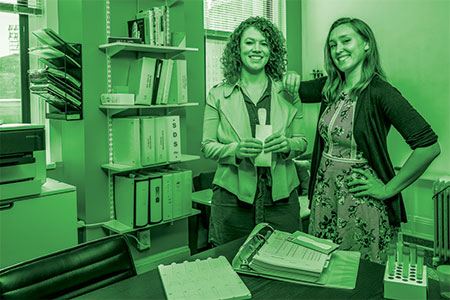
Anna Couturier, co-founder and chief product officer at Lia Diagnostics, with co-op student Riley Stanford.
Lia Diagnostics
While on co-op with Philadelphia-based startup Lia Diagnostics, College of Arts and Sciences major Riley Stanford ’19 created a patent-pending film for the firm’s flushable pregnancy test, which is close to commercialization. “This feels big,” Stanford says of the project. “It’s definitely a project I’m proud to be involved with. What Lia Diagnostics is doing is good for the environment and good for women, and both are things that I care passionately about. The Drexel co-op ultimately gave me the chance to see everything through and affect change.”
“Riley made an impact in the company,” says Couturier. “She’s super smart, she’s a fast learner, she’s genuine, nice, funny. She added to our culture, but she also pushed forward our technology and our manufacturing in the future. She’s done it all for us.”
Anna Couturier, co-founder and chief product officer, Lia Diagnostics

John Frentzen
Estée Lauder
“Our two co-ops in our last cycle in our quality assurance department actually developed an inspection application that we’re rolling out globally. They did all their own coding, created the app and presented it to the executive president of our supply chain. It’s been beneficial beyond our imagination. These students are unbelievable.”
John Frentzen, assistant manager, talent acquisition, Estée Lauder

Christian Roberts ’15, business sales representative at Comcast Corp., with Nika Chugh, fifth-year marketing student who co-op’d at Comcast.
Comcast Corp.
“The Drexel Co-op program is highly regarded by Comcast because we know that the students who come to work here are serious about gaining valuable work experience and could one day follow in the footsteps of other co-ops who have become top performers on our full-time team.”
Karen Dougherty Buchholz, senior vice president, Comcast Corp.
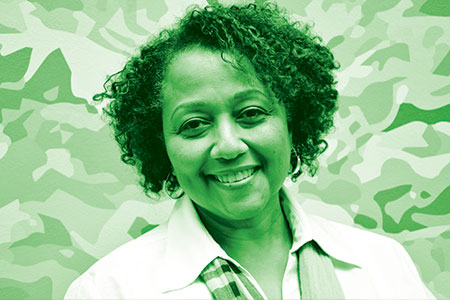
Sharon Brown
Philadelphia Ronald McDonald House
“The co-op program works for us because it allows the students a greater number of hours and that lets them get ingrained in our programs and really have a sense of what it’s like to be in a workplace full time. They become dedicated and connected to our mission. Those are the types of students we look for, who are looking to get involved with the community, and Drexel students really seem to have that desire.”
Sharon Brown, human resources manager, Philadelphia Ronald McDonald House
Top 25 Co-op Employers
- Children’s Hospital of Philadelphia
- PECO, an Exelon Co.
- Comcast Corp.
- Johnson & Johnson
- University of Pennsylvania
- Philadelphia Water Department
- Lockheed Martin
- Hospital of the University of Pennsylvania
- PJM Interconnection
- Susquehanna International Group
- Thomas Jefferson University Hospital
- SAP America
- National Board of Medical Examiners
- Estée Lauder/Northtec
- CHUBB (formerly ACE USA)
- Academic Internship Council
- Goldman, Sachs & Co.
- JPMorgan Chase & Co.
- NAVSEA
- FMC Corp.
- Independence Blue Cross
- Merck
- Fox Chase Cancer Center
- Macquarie Investment Management
- Bristol Myers Squibb Co.
- *2017–2018, excluding Drexel
-
1919

In the wake of World War I, Drexel Institute of Art, Science and Industry President Hollis Godfrey announces Drexel will support the post-war economy by creating a co-op program. The program begins with just 152 engineering students.
-
1929
Drexel responds to massive economic layoffs by approaching smaller employers and extending the coop work terms. Throughout the Great Depression, the unemployment rate rises from 3.2 in 1929 to 17 percent by 1939.
-
1934

Drexel’s four-year co-op in merchandising becomes a five-year co-op in retail management. The historic Wanamaker’s department store in Center City (now Macy’s) begins hiring Drexel students, largely women.
-
1941
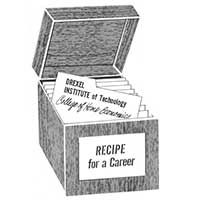
The U.S. enters World War II. In April 1940, about 13 million women make up the country’s total workforce; five years later, that number grew by more than 6 million.
-
1963
The National Commission for Cooperative Education is established, with a goal of doubling the number of cooperative institutions from 60 to 120 within 10 years.
-
1968
As part of the Higher Education Amendments of 1968, Congress makes $10.75 million in grants available to help institutions of higher education establish new co-op plans.
-
1971

There are now 178 institutions of higher education with some kind of cooperative program.
-
2005
Approximately 1,000 cooperative programs exist in the United States with approximately 200,000 students participating.
-
2006
A U.S. News & World Report article names Drexel one of the best “fully co-op” schools in the country.
-
2019

Today, there are many experiential education programs, but Drexel is one of only a small number of universities with full-time, for-credit alternating work periods and a formal employer role in curriculum design.
Donor support helps to keep Drexel’s co-op program strong by providing the resources for stipends so students can accept unpaid, international, and nonprofit opportunities to follow their passions


